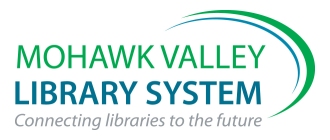 |
START WITH SCIENCE KITS
Science Programs for Children Ages 4 and 5 |
Objectives
- Students will be able to compare the length of two distances using tapes or rulers.
- Students will gain an understanding of how to measure the weight of an object or material.
- Students will be able to identify the difference between weight and volume of an object.
- Students will gain an understanding of density and its relation to weight and volume.
- Students will be able to measure the weight of an object using several different types of scales.
|
Book : (In kit)
- Room For Ripley by Stuart J. Murphy
- Measurements by Teacher Created Materials, Inc.
|
Equipment : (In kit)
- Measuring Tapes (set of 10)
- Bucket/Pan/Number Balance
- Primary Bucket Balance
- Hexagram Weight Set
- So-Big Ruler
- Elementary School Balance
- Platform Scale
- Big Tape
- Floor Scale
- Liquid Measure Set
- Containers (gal.,1/2 gal., qt., pt., cp)
- Measuring cups (1cp., 2cp., 4cp.)
- 1 Set blue measuring cups (1/4 cup missing)
- 1 set blue measuring spoons
- 4 Spring scales (250 gm, 500 gm, 1,000 gm, 5,000 gm)
- 3 Laminated instruction sheets
|
Consumables: (To be supplied by you)
- Objects to weigh and measure.
|
Resource Books: (Contact your local library to borrow)
- Bulloch, Ivan. Measure. Thomson Learning, 1994.
- Markle, Sandra. Measuring Up!: Experiments, Puzzles, and Games Exploring Measurement. Atheneum, 1995.
- Schwartz, David M. Millions To Measure. HarperCollins, 2003
|
Bookmarks: (In kit)
- Paper copies of the bookmark are included in the kit. PDF and JPEG copies are available here.
- PDF – 4 bookmarks per page. Ready to print in color.
- JPG – single high quality jpeg image.
|
Program
- Program
- This kit is primarily an exploratory kit. Students should be given the chance to try the different types of scales to discover which work best for which kind of measurement.
- Show how to use each type of measuring device correctly. Start with the simple mesurement of distance with the tapes and rulers. They should be used again later for measuring the size and volume of some objects.
- Use more than one measurement tool for describing the weight of a given object. For example, use a ruler or tape measure to measure a block of wood for length, width and height, and then calculate the volume. Then take the same block and put it in water to calculate the volume by water displacement. Then weigh the block on a balance scale to see how they compare. Find another object of the same weight and then see how it compares in volume to your wood block, or find another object of the same volume and see how it differs in weight. Think of a pound of feathers and a pound of bricks. They weigh the same, but how do their volumes differ? Which is denser?
- Measure different objects such as books, people, pencils, chairs, etc. How do they differ in weight? Size? Volume? Is there a differnce in density (remember divide the weight of the object by the volume of the object)?
- Weigh several students. Are they of equal density? Why not? (Muscle is denser than fat, so a strong, muscular child would probably weigh more than a flabby child, even if the strong child is shorter or looks smaller).
- Compare the size of an object to the weight of the object.
- Use the balance scales to show how objects of various sizes (volume) may have the same weight.
- Have students try to act as a balance, holding something with a known weight and predicting the weight of another object.
- Without any tools, how could you guess the weight of an object? Would it be easier to have it as a comparison or an actual weight?
|
Evaluation
Please print this evaluation, complete it and return to MVLS in the SWS red envelope.
Topics | About the Kits | Lending Policy

